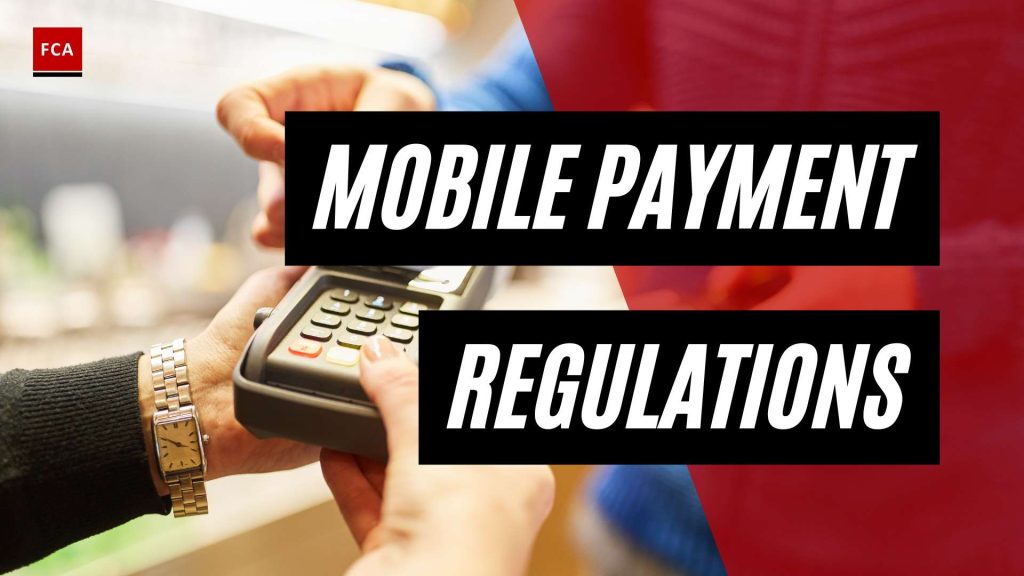Understanding Mobile Payments
Mobile payments have revolutionized the way we conduct financial transactions by allowing individuals to make payments using their mobile devices. This section provides an introduction to mobile payments and explores the benefits and challenges associated with this innovative payment method.
Introduction to Mobile Payments
Mobile payments refer to the use of mobile devices, such as smartphones or tablets, to make monetary transactions. With the growing popularity of mobile technology, mobile payments have become increasingly prevalent in our daily lives. They offer a convenient and efficient alternative to traditional payment methods, such as cash or credit cards.
Mobile payments can be made through various methods, including mobile wallets, mobile banking apps, and contactless payment technologies. These payment methods utilize near-field communication (NFC) technology or quick response (QR) codes to facilitate secure and seamless transactions. By simply tapping or scanning their mobile devices, users can make purchases, transfer funds, or pay bills with ease.
One of the key advantages of mobile payments is their convenience. Users no longer need to carry physical wallets or remember multiple card details. Mobile payment apps securely store payment information, making transactions quick and hassle-free. Additionally, mobile payments enable users to make purchases anytime, anywhere, as long as they have an internet connection.
Benefits and Challenges of Mobile Payments
Mobile payments offer several benefits that make them appealing to consumers and businesses alike. Some of the key advantages include:
- Convenience: Mobile payments allow users to make transactions with a simple tap or scan, eliminating the need for physical cards or cash.
- Speed: Mobile payments are often faster than traditional payment methods, reducing wait times for both customers and merchants.
- Security: Mobile payment apps employ advanced security measures, such as encryption and tokenization, to protect user information and prevent fraud.
- Accessibility: Mobile payments provide financial services to individuals who may not have access to traditional banking systems, promoting financial inclusion.
However, along with these benefits, mobile payments also present certain challenges and considerations. For example:
- Consumer Data Protection: The use of mobile payments exposes consumer data to various parties involved in the transaction, including mobile payment providers, mobile network operators, and third-party apps. This raises concerns about privacy and the potential sharing of sensitive information (CDT).
- Regulatory Compliance: The evolving nature of mobile payments necessitates the establishment and enforcement of regulations to ensure consumer protection, prevent fraud, and maintain the integrity of the financial system. Regulatory bodies play a crucial role in overseeing the mobile payment industry and promoting compliance (FDIC).
As the mobile payment industry continues to advance, it is essential for stakeholders to navigate these benefits and challenges to promote secure, efficient, and compliant mobile payment solutions. Understanding the regulatory landscape and consumer privacy considerations is crucial for businesses and individuals involved in the mobile payment ecosystem.
Regulatory Landscape of Mobile Payments
As the mobile payment industry continues to evolve, it operates within a complex regulatory landscape. Understanding the various mobile payment regulations and the key regulatory bodies involved is crucial for businesses and professionals working in compliance, risk management, anti-money laundering (AML), and anti-financial crime.
Overview of Mobile Payment Regulations
Mobile payments are subject to regulations that aim to ensure consumer protection, privacy, and security in electronic transactions. These regulations vary across different countries and regions. For instance, in the European Union, the Payment Services Directive 2 (PSD2) emphasizes security, consumer rights, and innovation in mobile payments. It requires Strong Customer Authentication (SCA) for electronic transactions to prevent fraud and protect consumers (National Merchants). In the United States, the Electronic Fund Transfer Act (EFTA) governs electronic fund transfers, including mobile payments, to safeguard consumer rights, liabilities, and responsibilities (National Merchants).
The regulatory framework for mobile payments also includes specific laws and regulations related to consumer protection, data privacy, anti-money laundering, and security measures. These regulations play a critical role in ensuring transparency, fairness, and security within the mobile payment industry.
Key Regulatory Bodies in the Mobile Payment Industry
The mobile payment industry is subject to oversight and regulation by various regulatory bodies. These regulatory bodies are responsible for setting and enforcing rules and guidelines to protect consumers, prevent fraud, and maintain the integrity of the financial system.
Some of the key regulatory bodies involved in regulating the mobile payment industry include:
-
Consumer Financial Protection Bureau (CFPB): The CFPB works to protect consumers in the financial marketplace by enforcing consumer protection laws, promoting fairness, and ensuring transparency in financial transactions.
-
Federal Reserve: The Federal Reserve plays a significant role in regulating and supervising financial institutions, including those involved in mobile payments. It aims to maintain a safe and efficient payment system.
-
Federal Trade Commission (FTC): The FTC protects consumers against unfair and deceptive practices in commerce, including mobile payment transactions. It enforces regulations related to consumer privacy, data protection, and fraud prevention.
-
National Credit Union Administration (NCUA): The NCUA regulates and supervises credit unions, including those providing mobile payment services. It ensures the safety and soundness of credit unions and protects consumers’ interests.
-
Federal Deposit Insurance Corporation (FDIC): The FDIC provides deposit insurance to banks and savings associations and ensures their safety and soundness. It also plays a role in regulating mobile payment providers to safeguard consumers’ rights and financial security.
Compliance with the regulatory requirements set forth by these bodies is essential for mobile payment providers to operate legally and responsibly. This includes adhering to anti-money laundering (AML) regulations, implementing risk management processes, ensuring data privacy and security, and complying with industry standards such as the Payment Card Industry Data Security Standard (PCI DSS) to protect sensitive payment information (FDIC).
By navigating the regulatory landscape and working in alignment with the guidelines set by these regulatory bodies, mobile payment providers can foster trust among consumers, mitigate risks, and contribute to a secure and compliant mobile payment ecosystem.
Consumer Privacy and Data Protection in Mobile Payments
As the mobile payment industry continues to grow, it brings with it various implications for consumer privacy and data protection. Understanding the impact of mobile payments on consumer data and the associated privacy concerns and legal implications is essential.
The Impact of Mobile Payments on Consumer Data
Mobile payment services have the potential to expose consumer data to multiple entities beyond traditional credit card transactions. This includes the mobile payment provider, mobile network operators, and third-party apps, resulting in the sharing of more detailed consumer information (CDT). With mobile payments, consumers may encounter services that use transaction information to target them with offers, coupons, and personalized advertising, which might differ from their expectations based on offline transactions influencing online advertising (CDT). Additionally, mobile payment services can enable merchants to establish detailed customer profiles by accessing consumers’ contact information, phone numbers, email addresses, and purchase histories, potentially leading to personalized loyalty programs for each merchant (CDT).
To address these privacy concerns, it is crucial for mobile payment services to implement “privacy by design” principles. This means providing users with global and granular options to restrict unnecessary information disclosures and ensuring transparency in data collection and usage. By incorporating privacy safeguards into the design of mobile payment services, consumer trust can be built without the need for additional regulations (CDT).
Privacy Concerns and Legal Implications
The mobile payment industry is subject to numerous regulations aimed at ensuring consumer rights, liabilities, and responsibilities in electronic fund transfers, including mobile payments. For example, in the European Union, the Payment Services Directive 2 (PSD2) emphasizes security, consumer rights, and innovation. It requires Strong Customer Authentication (SCA) for electronic transactions to prevent fraud and protect consumers (National Merchants). In the United States, the Electronic Fund Transfer Act (EFTA) safeguards consumer rights, liabilities, and responsibilities in electronic fund transfers, including mobile payments.
Mobile payment regulations also cover issues such as chargebacks, disputes, fraud prevention, data security, and privacy protection to safeguard both consumers and businesses in the digital payment ecosystem (National Merchants). Compliance with these regulations is crucial for businesses to navigate legal requirements, ensure customer trust, and operate ethically within the evolving landscape of digital payments. Failure to comply can result in financial penalties, loss of reputation, and legal consequences (National Merchants).
To stay informed about the latest developments in mobile payment regulations and ensure compliance, businesses can refer to regulatory documentation and sources provided by relevant regulatory bodies. Additionally, professional organizations and news platforms dedicated to the mobile payment industry can provide valuable insights and updates on regulatory changes and best practices (National Merchants).
By prioritizing consumer privacy and data protection, the mobile payment industry can navigate the compliance maze and build a secure and trustworthy ecosystem for digital payments.
Compliance and Risk Management in Mobile Payments
In the mobile payment industry, compliance with regulations and effective risk management are crucial to ensure the integrity and security of transactions. Mobile payment providers must adhere to anti-money laundering (AML) regulations and implement robust risk management processes to prevent money laundering and terrorist financing through mobile payment platforms.
Anti-Money Laundering (AML) Regulations
To combat financial crime, mobile payment providers are required to comply with the Bank Secrecy Act (BSA) and anti-money laundering (AML) regulations. These regulations necessitate the implementation of stringent risk management processes, customer due diligence (CDD), and suspicious activity reporting (FDIC). By adhering to AML regulations, mobile payment providers play a crucial role in preventing illicit financial activities and ensuring the security of the mobile payment ecosystem.
Risk Management Processes in Mobile Payments
Effective risk management is essential for mobile payment providers to identify, assess, and mitigate potential risks associated with mobile transactions. Risk management processes involve the implementation of policies, procedures, and controls to safeguard against fraud, data breaches, and other operational risks. Key aspects of risk management in mobile payments include:
-
Customer Due Diligence (CDD): Mobile payment providers must establish robust CDD procedures to verify the identity of customers and assess the potential risks associated with their transactions. This includes verifying customer information, conducting risk assessments, and implementing ongoing monitoring to detect suspicious activities.
-
Transaction Monitoring: Mobile payment providers utilize transaction monitoring systems to detect and investigate potentially fraudulent or suspicious transactions. These systems use advanced algorithms and artificial intelligence to analyze transaction patterns, identify anomalies, and flag high-risk transactions for further review and investigation.
-
Fraud Prevention: Implementing fraud prevention measures is crucial to protect both consumers and providers in the mobile payment industry. Mobile payment providers employ various techniques, such as advanced authentication methods, biometric security, and machine learning algorithms, to detect and prevent fraudulent activities.
-
Compliance with Payment Industry Standards: Mobile payment providers must comply with industry standards, such as the Payment Card Industry Data Security Standard (PCI DSS). Compliance with PCI DSS ensures the implementation of security measures to protect sensitive payment information, reduce the risk of data breaches, and ensure secure mobile transactions.
By integrating robust risk management processes into their operations, mobile payment providers can enhance security, mitigate risks, and maintain compliance with regulatory requirements. These measures are essential for building trust among consumers and ensuring the long-term viability of the mobile payment industry.
To stay updated on the evolving landscape of compliance and risk management in mobile payments, professionals in the industry can refer to regulatory documentation and sources, as well as engage with professional organizations and news platforms that provide insights and updates on mobile payment regulations. This information is crucial for navigating the compliance maze and ensuring adherence to the latest regulatory requirements in the dynamic mobile payment industry.
Ensuring Security in Mobile Payments
When it comes to mobile payments, ensuring the security of sensitive payment information is of utmost importance. One of the key standards that mobile payment providers must adhere to is the Payment Card Industry Data Security Standard (PCI DSS). The PCI DSS applies to mobile payment providers that store, process, or transmit cardholder data and requires compliance with security measures to protect sensitive payment information, reduce the risk of data breaches, and ensure secure mobile transactions (FDIC).
Payment Card Industry Data Security Standard (PCI DSS)
The Payment Card Industry Data Security Standard (PCI DSS) is a set of security standards established by major credit card companies to protect cardholder data. It applies to all organizations that handle payment card information and is especially relevant in the context of mobile payments. The PCI DSS provides a comprehensive framework of requirements that mobile payment providers must adhere to in order to protect sensitive payment information.
The key requirements of the PCI DSS include:
-
Building and maintaining a secure network: Mobile payment providers must implement robust security measures to protect their networks from unauthorized access. This includes using firewalls, encryption, and secure coding practices.
-
Protecting cardholder data: Mobile payment providers must ensure the secure storage and transmission of cardholder data. This involves encryption, tokenization, and the implementation of strict access controls.
-
Maintaining a vulnerability management program: Regularly scanning for vulnerabilities and promptly addressing any security issues is essential. Mobile payment providers should also keep their systems up to date with the latest security patches.
-
Implementing strong access control measures: Limiting access to cardholder data and assigning unique user IDs is crucial for maintaining security. Mobile payment providers should also regularly review and update access permissions.
-
Regularly monitoring and testing networks: Ongoing monitoring of networks and systems helps to identify and respond to security incidents. Mobile payment providers should also conduct regular penetration testing to identify vulnerabilities and ensure the effectiveness of security measures.
-
Maintaining an information security policy: Mobile payment providers should have a comprehensive information security policy that outlines their security objectives, procedures, and responsibilities. Regular training and awareness programs should also be conducted to educate employees about security best practices.
By adhering to the PCI DSS requirements, mobile payment providers can significantly enhance the security of their platforms and protect sensitive payment information from unauthorized access and potential data breaches.
Safeguarding Sensitive Payment Information
In addition to complying with the PCI DSS, mobile payment providers must implement a range of security measures to safeguard sensitive payment information. This includes employing encryption technologies to protect data during transmission and storage. Encryption ensures that even if the data is intercepted, it remains unreadable and unusable to unauthorized parties.
Mobile payment providers should also implement multi-factor authentication, requiring users to provide multiple pieces of evidence to verify their identity. This adds an extra layer of security, reducing the risk of unauthorized access to mobile payment accounts.
Furthermore, robust fraud detection and prevention systems should be in place to monitor and identify suspicious activities. Mobile payment providers must invest in advanced technologies such as machine learning and artificial intelligence to detect and prevent fraudulent transactions in real-time.
Regular security audits and vulnerability assessments should also be conducted to identify any weaknesses or potential security breaches in the mobile payment infrastructure. By regularly assessing and addressing vulnerabilities, mobile payment providers can proactively enhance the security of their systems.
By implementing these security measures, mobile payment providers can instill confidence in their customers, safeguard sensitive payment information, and ensure secure and trustworthy mobile payment transactions.
To stay updated on the ever-evolving landscape of mobile payment regulations, it is essential for professionals in compliance, risk management, anti-money laundering, and anti-financial crime to refer to regulatory documentation, professional organizations, and news platforms. These resources provide valuable insights and information on the latest industry developments and regulatory updates.
State Laws and Licensing in the Mobile Payment Industry
In the vast and evolving landscape of mobile payments, it is crucial for mobile payment providers to navigate and comply with state laws and licensing requirements. Each state within the United States may have its unique regulations and obligations that mobile payment providers must adhere to. Let’s explore the state regulations for mobile payment providers and the compliance and licensing obligations they entail.
State Regulations for Mobile Payment Providers
Mobile payment providers must pay close attention to the regulations set forth by each state where they operate. These regulations may cover a wide range of aspects, including licensing, consumer protection, and financial security. While the specific requirements may vary from state to state, they typically involve:
-
Licensing: Mobile payment providers are often required to obtain specific licenses or permits to offer their services in a particular state. These licenses ensure that providers meet the necessary standards and comply with state regulations. The licensing process typically involves submitting an application, paying fees, and undergoing a thorough review by the state regulatory authorities.
-
Consumer Protection: State regulations often focus on protecting consumers in mobile payment transactions. These regulations may include provisions related to fraud prevention, dispute resolution, and the disclosure of terms and conditions to ensure transparency and fairness for consumers. Mobile payment providers must adhere to these regulations to safeguard the interests of their customers and maintain trust within the industry.
-
Financial Security: State regulations may also address the financial security of mobile payment providers. This includes requirements for maintaining reserve funds, complying with anti-money laundering (AML) regulations, and implementing robust risk management processes. By adhering to these regulations, providers can mitigate the risk of financial crimes and protect the integrity of the mobile payment ecosystem.
Compliance and Licensing Obligations
To operate legally and effectively, mobile payment providers must comply with the state regulations and licensing obligations applicable to their operations. This involves:
-
Researching State Requirements: Mobile payment providers need to thoroughly research the specific regulations and licensing requirements of each state where they intend to offer their services. This includes understanding the licensing process, any fees involved, and the ongoing compliance obligations.
-
Applying for Licenses: Providers must complete the necessary licensing applications accurately and submit them to the appropriate state regulatory authorities. It is essential to provide all required information and documentation to support the application process.
-
Maintaining Compliance: Once licensed, mobile payment providers must ensure ongoing compliance with state regulations. This requires staying up to date with any changes in regulations, promptly addressing any compliance issues, and implementing necessary processes and controls to meet regulatory obligations.
By adhering to state laws and licensing requirements, mobile payment providers can operate legally, protect consumers, and maintain the integrity and security of the mobile payment industry.
To stay informed about the ever-changing regulatory landscape in the mobile payment industry, mobile payment providers can refer to regulatory documentation and sources, as well as professional organizations and news platforms. These resources help providers stay updated on new regulations, industry trends, and best practices to ensure compliance with state laws and licensing requirements.
Remember, compliance with state regulations is essential for mobile payment providers to establish trust, protect consumers, and contribute to the growth and advancement of the mobile payment industry.
Future Trends and Challenges in Mobile Payments
As the mobile payment industry continues to evolve, it faces both exciting opportunities and new challenges. In this section, we will explore two significant aspects that shape the future of mobile payments: technological advancements and the evolving regulatory landscape.
Technological Advancements and Consumer Expectations
Technological advancements play a crucial role in shaping the future of mobile payments. As Mostyn Chase highlights, the payments industry must adapt alongside rapid technological developments to meet the expectations set by these advancements.
One of the key factors driving change is the shifting behavior of consumers. Consumers increasingly expect flawless and instant payment experiences across a variety of devices and locations, as mentioned by Mostyn Chase. Failing to meet these demands can lead businesses to lag behind their competitors.
To stay competitive, the mobile payment industry must keep up with technological advancements and anticipate consumer expectations. This includes embracing innovations such as biometric authentication, contactless payments, and wearable technology. By offering convenient and secure payment solutions, businesses can cater to the evolving needs of their customers.
The Evolving Regulatory Landscape
The mobile payment industry operates within a regulatory framework to ensure financial stability, consumer protection, and integrity. However, the dynamic nature of the industry presents ongoing challenges for regulators, as noted by Mostyn Chase.
Regulations in the mobile payment industry need to adapt to new technologies and business models. This is particularly important as fintech firms and digital payments gain prominence, as mentioned by the IMF. Stronger regulation and supervision are necessary to maintain financial stability and protect consumers.
Collaboration between regulators, central banks, and other stakeholders is crucial in establishing an enabling environment for innovation, competition, and financial stability in the mobile payment industry, while preserving consumer protection and financial integrity, as highlighted by the IMF.
Regulatory responses to govern the mobile payment industry effectively differ across jurisdictions, as mentioned by the Bank for International Settlements. Some countries apply existing regulatory frameworks, while others introduce specific regulations to address mobile payment risks. However, keeping pace with the speed of technology development remains a challenge in enforcing regulations specific to mobile payments, as noted by the Bank for International Settlements.
To navigate the evolving regulatory landscape, industry participants must stay informed about the latest regulatory requirements and updates. Regularly consulting regulatory documentation and sources, as well as engaging with professional organizations and news platforms, can provide valuable insights into changes and developments in the industry. For more information on resources for staying updated on mobile payment regulations, refer to our section on resources for staying updated on mobile payment regulations.
As the mobile payment industry continues to grow and innovate, it is crucial for stakeholders to adapt to technological advancements and remain compliant with evolving regulations. By embracing change and addressing challenges, the industry can continue to provide secure and seamless payment experiences for consumers while meeting regulatory obligations.
Resources for Staying Updated on Mobile Payment Regulations
To navigate the ever-evolving regulatory landscape of the mobile payment industry, it is essential to stay informed about the latest regulations and compliance requirements. Here are some valuable resources that can help professionals in the field of compliance, risk management, anti-money laundering, and anti-financial crime stay updated on mobile payment regulations.
Regulatory Documentation and Sources
-
Federal Deposit Insurance Corporation (FDIC): The FDIC provides a collection of documentation of laws and regulations related to the mobile payment industry, among other financial information. These resources are valuable for consumers, bankers, analysts, and stakeholders. Visit the FDIC website for more information.
-
Payment Services Directive 2 (PSD2): PSD2 is a key regulatory framework in the European Union that emphasizes security, consumer rights, and innovation in the mobile payment industry. It requires Strong Customer Authentication (SCA) for electronic transactions to prevent fraud and protect consumers. Stay updated on PSD2 and related regulations to ensure compliance in the European market.
Professional Organizations and News Platforms
-
Consumer Data Trust (CDT): The CDT offers insights and resources on the impact of mobile payments on consumer data and privacy concerns. They provide valuable analysis and recommendations for addressing privacy issues and building consumer trust in mobile payments without requiring new regulations. Explore their insights on mobile payments and consumer data for a deeper understanding.
-
National Merchants Association: The National Merchants Association offers insights and updates on the mobile payment industry, including regulatory trends and compliance requirements. Their blog covers various topics related to the industry, such as payment industry trends and regulations in the United States. Visit their blog for valuable information on payment industry trends to follow and related regulatory updates.
-
Regulatory Agencies and Government Websites: Stay updated on mobile payment regulations by regularly visiting the websites of regulatory agencies such as the Consumer Financial Protection Bureau (CFPB), the Federal Reserve, the Federal Trade Commission (FTC), the National Credit Union Administration (NCUA), and the Federal Deposit Insurance Corporation (FDIC). These agencies often provide updates, guidelines, and resources pertaining to mobile payment regulations.
By utilizing these resources, professionals can stay informed about the latest developments in mobile payment regulations, compliance requirements, and industry best practices. It is crucial to stay vigilant and adapt to the changing regulatory landscape to ensure the security, privacy, and compliance of mobile payment services.









